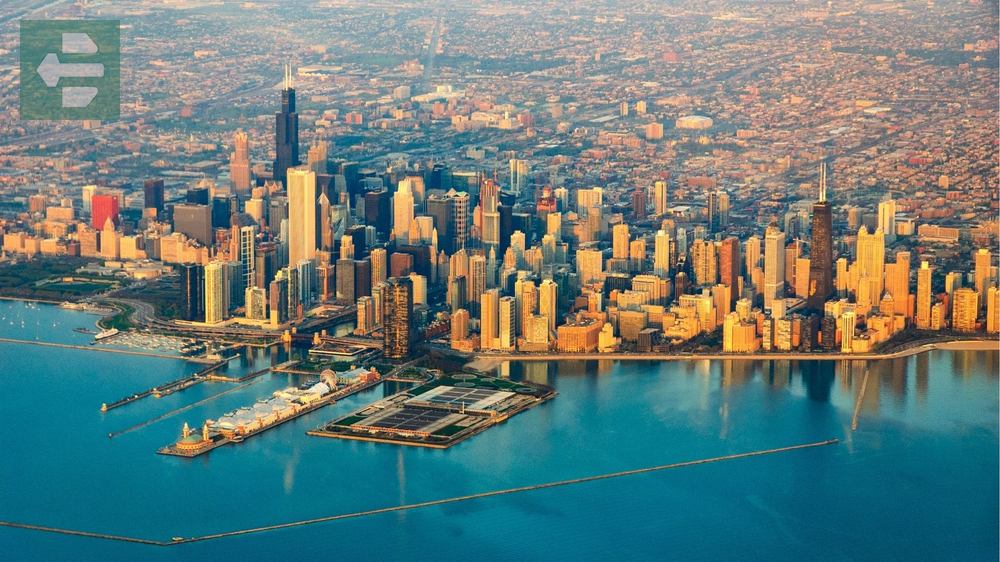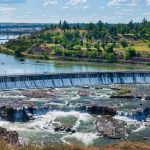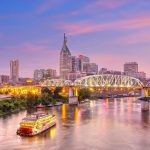Illinois offers remarkable diversity beyond its famous skyline, from ancient Native American sites to stunning natural formations. The best places to visit in Illinois include Chicago's architectural marvels, Springfield's presidential history, Galena's Victorian charm, and the dramatic cliffs of Starved Rock State Park.
Keep reading as we explore Illinois' hidden gems and iconic destinations that will transform your Midwest adventure into an unforgettable journey.
List of Contents
- 1. Chicago: America's Second City
- 2. Springfield: Lincoln's Legacy Lives Here
- 3. Galena: Victorian Elegance Frozen in Time
- 4. Starved Rock State Park: Illinois' Grand Canyon
- 5. Garden of the Gods: Shawnee's Stone Sculptures
- 6. Cahokia Mounds: America's First City
- 7. Nauvoo: Where Two Worlds Meet
- 8. Rock Island: Arsenal Island's Military Heritage
- 9. Peoria: Heart of the Heartland
- 10. Bloomington: Twin Cities Heritage
- 11. Champaign-Urbana: College Town Innovation
- 12. Rockford: Garden City Surprises
1. Chicago: America's Second City
Chicago rises from Lake Michigan's shore with a skyline that tells stories in steel and glass. The city rebuilt itself after the Great Fire of 1871, creating the birthplace of the modern skyscraper.
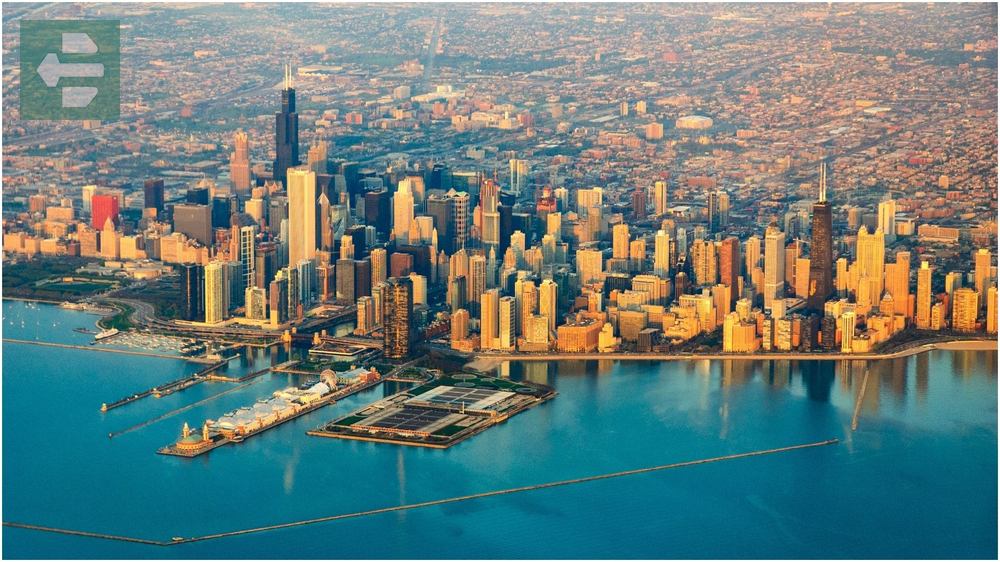
Walk the Riverwalk at dawn when the city belongs to joggers and early commuters. The reflection of the Willis Tower in the water creates a perfect mirror image that photographers dream about.
Skip the crowded Navy Pier tourist traps. Instead, ride the L train during rush hour—it's where you'll see the real Chicago, from stockbrokers to students, all sharing the same rattling journey above the streets.
Quick Facts:
- Peak Season: June to August
- How to Get There: O'Hare or Midway airports, Amtrak Union Station
- Entry Fees: Free for most attractions, museums from $25
- Suggested Stay: 3-4 days
- Must-See Areas: Millennium Park, Art Institute, Magnificent Mile, Lincoln Park Zoo
2. Springfield: Lincoln's Legacy Lives Here
Springfield preserves Abraham Lincoln's story in brick and mortar. The Lincoln Home National Historic Site sits on the same corner where the future president lived for 17 years before heading to Washington.
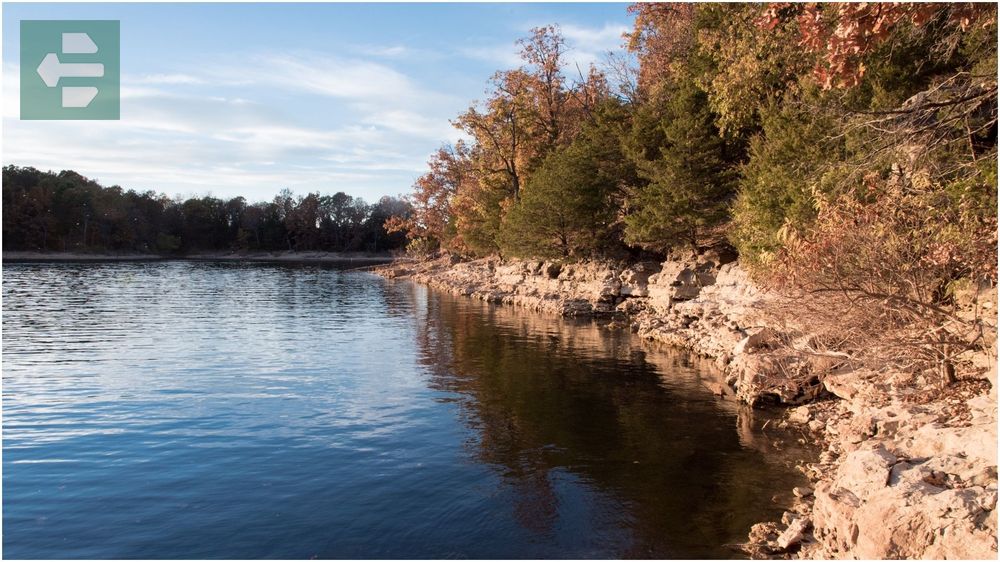
I stood in Lincoln's parlor on a quiet Tuesday morning, imagining the conversations that shaped a nation. The floorboards creak under your feet—the same sounds Lincoln heard while pacing and planning.
Visit the Old State Capitol during weekday mornings when school groups haven't arrived. The silence in these chambers feels sacred, heavy with the weight of decisions that changed American history forever.
Quick Facts:
- Peak Season: April to October
- How to Get There: I-55 from Chicago (3 hours), Amtrak
- Entry Fees: Free for most Lincoln sites
- Suggested Stay: 2 days
- Must-See Areas: Lincoln Home, Old State Capitol, Lincoln Tomb, Abraham Lincoln Presidential Library
3. Galena: Victorian Elegance Frozen in Time
Galena's Main Street looks exactly as it did when Ulysses S. Grant returned home from the Civil War. The entire downtown is a National Historic Landmark, with 85% of its buildings listed on the National Register.
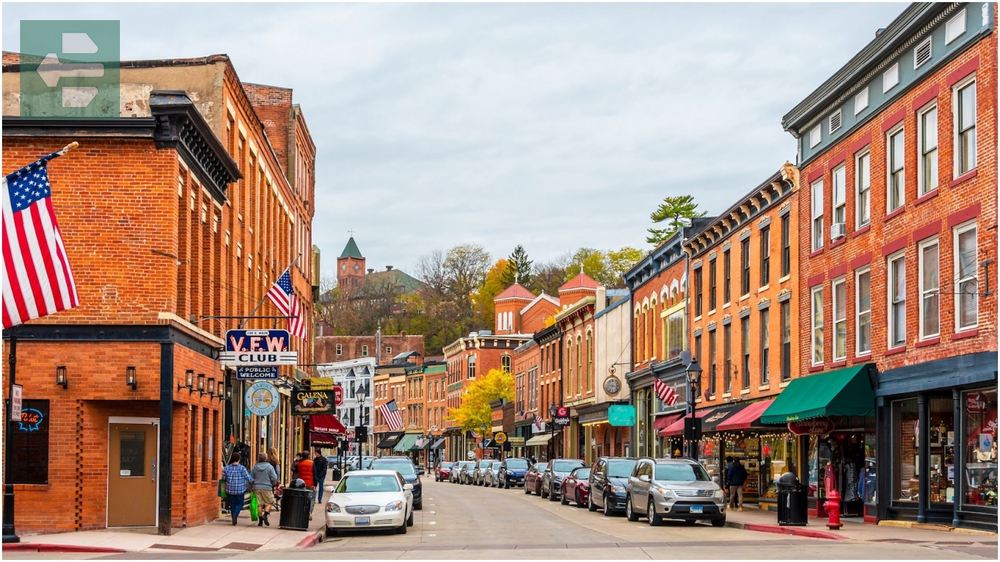
The morning fog rolls off the Galena River, wrapping around Victorian mansions like a scene from a period film. Each building tells a story of lead mining wealth and steamboat commerce.
Park behind the DeSoto House Hotel and walk the brick sidewalks early. The antique shops won't be open, but you'll have the cobblestone streets to yourself, hearing only your footsteps echoing off 19th-century storefronts.
Quick Facts:
- Peak Season: October (fall colors), December (holidays)
- How to Get There: US-20 west from Rockford (1 hour)
- Entry Fees: Free to explore, house tours from $12
- Suggested Stay: Weekend getaway
- Must-See Areas: Main Street, Grant Home, Belvedere Mansion, Galena River Trail
4. Starved Rock State Park: Illinois' Grand Canyon
Starved Rock's 18 canyons carve deep grooves into Illinois' landscape, creating waterfalls that freeze into crystal sculptures each winter. The park sits where the Illinois River meets ancient sandstone formations carved by glacial meltwaters.
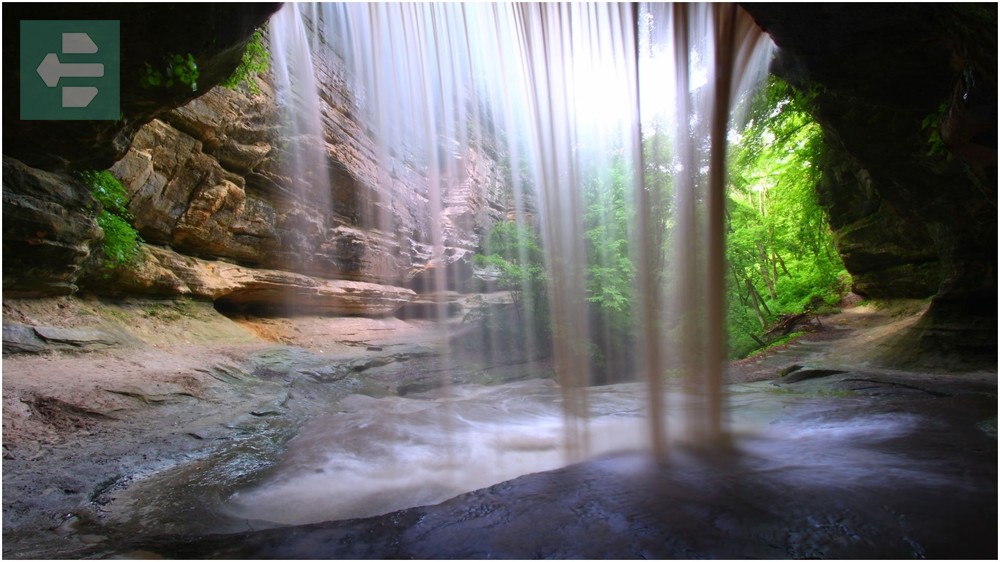
In February, I hiked to French Canyon when the waterfall had turned to ice. The silence was absolute except for the occasional crack of shifting ice—nature's own percussion in an outdoor cathedral.
Wear microspikes or hiking boots with good tread. The wooden stairs can be slippery, and you'll want sure footing when you're standing at the edge of these 125-foot bluffs overlooking the Illinois River.
Quick Facts:
- Peak Season: October-November (fall), February-March (ice falls)
- How to Get There: I-80 west to Route 178 south
- Entry Fees: Free park entry, lodge parking $5
- Suggested Stay: Day trip or overnight at lodge
- Must-See Areas: St. Louis Canyon, French Canyon, Eagle Cliff, Wildcat Canyon
5. Garden of the Gods: Shawnee's Stone Sculptures
Southern Illinois transforms into something unexpected at Garden of the Gods. These sandstone formations rise from dense forest, creating natural sculptures that took 200 million years to perfect.
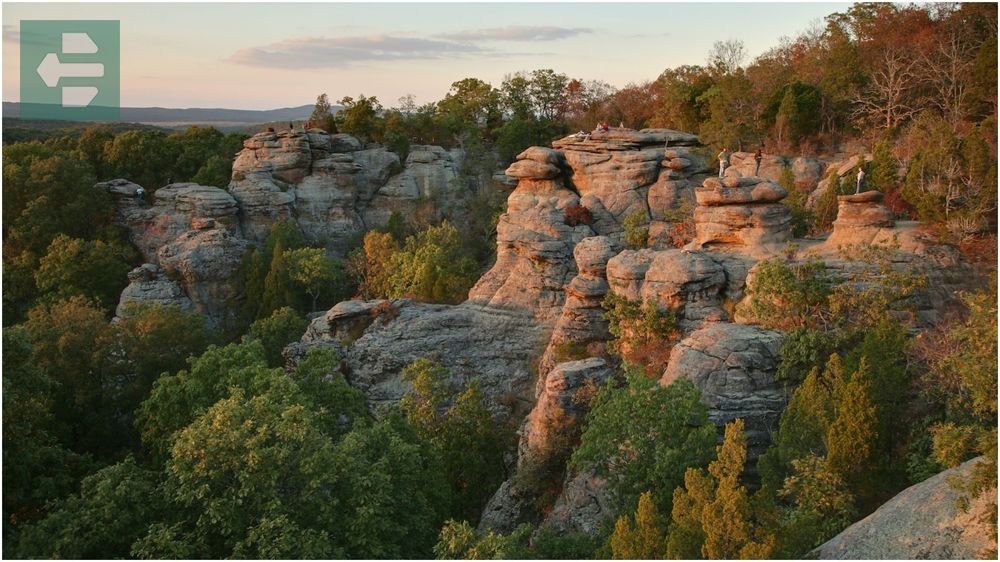
The main observation trail leads to a panoramic view that stretches to the horizon. On clear days, you can see three states from this ancient overlook where Native Americans once gathered.
Visit during weekday mornings for the best photography light. The golden hour here starts about 30 minutes before sunset, when the sandstone glows like amber against the green canopy below.
Quick Facts:
- Peak Season: April-May, September-October
- How to Get There: Route 34 east from Harrisburg
- Entry Fees: Free
- Suggested Stay: Day trip, camping available
- Must-See Areas: Observation Trail, Camel Rock, Fat Man's Squeeze, Anvil Rock
6. Cahokia Mounds: America's First City
Cahokia was once larger than London, a thriving metropolis of 20,000 people who built the largest prehistoric earthen construction in the Americas. Monks Mound rises 100 feet above the Mississippi River floodplain, a testament to sophisticated urban planning from 900 years ago.

Standing atop Monks Mound at sunrise, you're seeing the same view that Cahokian leaders used to survey their vast city. The St. Louis skyline appears small in comparison to what once stood here.
Bring water and wear comfortable shoes for the climb up Monks Mound. The 156 steps to the top are steep, but the 360-degree view of the ancient city's layout makes every step worthwhile.
Quick Facts:
- Peak Season: April-October
- How to Get There: I-255 to Collinsville Road exit
- Entry Fees: Free site access, museum $7
- Suggested Stay: Half day
- Must-See Areas: Monks Mound, Grand Plaza, Interpretive Center, Twin Mounds
7. Nauvoo: Where Two Worlds Meet
Nauvoo sits on a bend of the Mississippi River where Illinois meets Iowa and Missouri. This small town holds outsized historical significance as the restored 1840s Mormon settlement and a thriving Icarian communal society site.

The Mormon Temple reconstruction dominates the skyline, visible for miles along the river. Walking through the Historic Nauvoo Village feels like stepping through a time portal into frontier America.
Visit the blacksmith shop when it's operating—usually Tuesday through Saturday. The ring of hammer on anvil and the glow of the forge create an authentic atmosphere that brings the 19th century to life.
Quick Facts:
- Peak Season: May-September
- How to Get There: Route 96 along Mississippi River
- Entry Fees: Free for most sites, temple tours $5
- Suggested Stay: Day trip
- Must-See Areas: Historic Nauvoo Village, Nauvoo Temple, Joseph Smith Historic Site, Mississippi riverfront
8. Rock Island: Arsenal Island's Military Heritage
Rock Island Arsenal sits on a Mississippi River island, home to the largest government-owned weapons manufacturing arsenal in the Western Hemisphere. The island bridges Illinois and Iowa, connected by the longest high-speed rail bridge across the Mississippi.

The Rock Island Arsenal Museum houses one of the largest military weapons collections in the world. Walking through these halls, you're seeing 200 years of American military innovation in one place.
Enter through the Moline gate for easier parking and security processing. The island's tree-lined streets and historic quarters create an unexpected peaceful atmosphere despite its military purpose.
Quick Facts:
- Peak Season: April-October
- How to Get There: I-280 to Rock Island, security checkpoint required
- Entry Fees: Free with government ID, museum $5
- Suggested Stay: Half day
- Must-See Areas: Arsenal Museum, Confederate Cemetery, Colonel Davenport House, Clock Tower Building
9. Peoria: Heart of the Heartland
Peoria earned its place in American vernacular with the phrase “Will it play in Peoria?”—meaning will it appeal to mainstream America. This river city built its reputation on Caterpillar manufacturing and remains the company's global headquarters.

The Peoria Riverfront Museum sits dramatically cantilevered over the Illinois River. Inside, the planetarium dome creates one of the most immersive star-gazing experiences in the Midwest.
Take the Grand View Drive scenic route, which Theodore Roosevelt called “the world's most beautiful drive.” The 2.5-mile route offers panoramic views of the Illinois River valley that haven't changed much since Roosevelt's 1903 visit.
Quick Facts:
- Peak Season: May-September
- How to Get There: I-74 through central Illinois
- Entry Fees: Free riverfront access, museum $12
- Suggested Stay: 1-2 days
- Must-See Areas: Riverfront Museum, Grand View Drive, Luthy Botanical Garden, Peoria Zoo
10. Bloomington: Twin Cities Heritage
Bloomington-Normal sits at the intersection of historic Route 66 and the Lincoln Highway, making it a crossroads of American travel history. The twin cities grew up around the Illinois Central Railroad and remain connected by Illinois State University.

The David Davis Mansion showcases Second Empire architecture at its finest. Walking through these ornate rooms, you're seeing how Illinois Supreme Court justices lived during Reconstruction-era America.
Visit the Beer Nuts factory store on Friday afternoons when production is running. You can smell the roasting peanuts from blocks away, and the warm nuts straight from the line taste nothing like the packaged versions.
Quick Facts:
- Peak Season: September-October (university season)
- How to Get There: I-55 and I-74 intersection
- Entry Fees: Free for most attractions
- Suggested Stay: Day trip
- Must-See Areas: David Davis Mansion, Miller Park Zoo, Constitution Trail, Downtown Bloomington
11. Champaign-Urbana: College Town Innovation
The University of Illinois campus spreads across both Champaign and Urbana, creating a college town atmosphere powered by Big Ten energy. This is where the graphical web browser was invented, launching the internet revolution from the prairie.

The Krannert Center for the Performing Arts hosts world-class performances in four theaters under one roof. The architecture itself is worth seeing—brutalist concrete that somehow achieves elegance through proportion and light.
Park near the Quad and walk through the campus core. The massive elm trees create a canopy over sidewalks where students have walked for 150 years, connecting you to generations of learners and innovators.
Quick Facts:
- Peak Season: September-November (fall campus)
- How to Get There: I-57 and I-74 intersection
- Entry Fees: Free campus access
- Suggested Stay: Day trip
- Must-See Areas: University Quad, Krannert Center, Spurlock Museum, Memorial Stadium
12. Rockford: Garden City Surprises
Rockford surprises visitors with unexpected cultural depth. The Burpee Museum houses “Jane” the juvenile T-Rex, one of the most complete dinosaur skeletons ever discovered. Nicholas Conservatory creates a tropical paradise in the middle of the Illinois prairie.

Anderson Japanese Gardens earned recognition as North America's highest-quality Japanese garden. The meticulously maintained landscape creates perfect harmony between water, stone, and plants—a meditation in living form.
Visit the gardens during weekday mornings when you might have entire sections to yourself. The sound of water flowing over stone and the carefully framed views create moments of pure tranquility.
Quick Facts:
- Peak Season: April-October
- How to Get There: I-90 northwest from Chicago
- Entry Fees: Free for many attractions, gardens $12
- Suggested Stay: Day trip
- Must-See Areas: Anderson Japanese Gardens, Burpee Museum, Nicholas Conservatory, Rock Cut State Park
Illinois rewards the curious traveler with unexpected discoveries around every corner. From Chicago's soaring architecture to ancient Cahokian earthworks, these destinations prove the Prairie State holds treasures worth crossing continents to experience.
Your Illinois adventure awaits. Pack comfortable walking shoes and an open mind—the Land of Lincoln has stories to tell that will stay with you long after you've returned home.
Each destination offers its own magic, whether you're watching sunrise from Monks Mound or listening to ice crack in Starved Rock's canyons. The best places to visit in Illinois aren't just locations on a map—they're doorways to experiences that connect you to America's heartland in ways you never imagined possible.
